Beyond the Veil
For ages God has been inviting people to seek Him. Yet, at the same time, He made it clear that it was impossible to enter His presence. When Moses asked to see God’s glory, God replied, “I will make all My goodness pass before you, and I will proclaim the name of the Lᴏʀᴅ before you. I will be gracious to whom I will be gracious, and I will have compassion on whom I will have compassion” (Ex. 33:19). But He told Moses, “You cannot see My face; for no man shall see Me, and live” (v. 20).
In fact, the Holy of Holies in both the Tabernacle in the wilderness and later in the Temple in Jerusalem was protected by a heavy veil. Behind the veil was the Ark of the Covenant, with its mercy seat. The space between the mercy seat (on top of the Ark) and the extended wings of the cherubim above it was God’s dwelling place among His people.
With the exception of Moses (25:22), only the high priest was allowed to approach the mercy seat. He could do so only once a year, on Yom Kippur (Day of Atonement); and he had to bring the blood of an animal.
When Jesus died, something spectacular occurred that forever changed access to the God of Abraham, Isaac, and Jacob.
Before Christ Died
Under the Mosaic Law, access to God was segregated and limited. No mere Israelite could enter God’s presence. The Levitical priests had to offer specific sacrifices on the worshiper’s behalf. And though the priests tended to the daily offerings and routines of the Holy Place, not even they could approach the mercy seat where the presence of the glory of God resided.
Through the years, thousands of priests ministered in the Tabernacle and then the Temple without ever being permitted direct access to God.
By God’s instructions to Moses, a heavy veil was hung between the Holy Place and the Holy of Holies (40:21–22). God told Moses to be extremely careful to construct all the Tabernacle’s components exactly as God had shown him (25:9). The veil served as a barrier and constant reminder that sinful people could not simply walk into the presence of the Holy One of Israel.
In the days of the second Temple, which was enlarged by Herod, there were actually two veils. Not knowing if the veil in Solomon’s Temple hung closer to the Holy Place or the Holy of Holies, the priests hung one in each place.1 These veils were massive. Wrote Bible expositor David M. Levy,
According to the Talmud, the veils were 60 feet long, 30 feet wide, and about the thickness of a man’s palm (4 inches), and made of 72 squares that were sewn together. The veils were so heavy that it took 300 priests to hang them, according to Jewish tradition.2
Priests entered the Holy Place twice a day to burn incense on the altar. They did so with holy reverence and trembling to protect themselves from being consumed by the holiness of God.
One such priest was Zacharias, who was so ministering when the angel Gabriel met him to tell him he would have a son in his old age (Lk. 1:5–11). That son later would be called John the Baptist. However, these priests never entered with blood or approached the mercy seat. Only the high priest was permitted to do so on the Day of Atonement.
This elaborate design and procedure, originated by God at Mount Sinai, was to remind the Israelites that they could not enter God’s presence. It is hard to grasp how 14 centuries of this tradition affected the Jewish people. One wonders if they had any hope at all of entering the presence of the Holy One of Israel.
Paving the Way
But God had a plan. He prepared a body for His beloved Son, the eternal second Person of the triune God: “And the Word became flesh and dwelt among us, and we beheld His glory, the glory as of the only begotten of the Father, full of grace and truth” (Jn. 1:14). Jesus was to become “a life-giving spirit” (1 Cor. 15:45). Jesus fulfilled King David’s prophecy that the Messiah, though from the tribe of Judah, not Levi, would be “a priest forever according to the order of Melchizedek” (Ps. 110:4):
Who, in the days of His flesh, when He had offered up prayers and supplications, with vehement cries and tears to Him who was able to save Him from death, and was heard because of His godly fear, though He was a Son, yet He learned obedience by the things which He suffered. And having been perfected, He became the author of eternal salvation to all who obey Him, called by God as High Priest “according to the order of Melchizedek” (Heb. 5:7–10).
This Melchizedekian priesthood is superior to the Levitical priesthood because it is based on the perpetuity of an indestructible life, Jesus’ once-for-all sacrifice of superior blood, and the superior New Covenant:
But Christ came as High Priest of the good things to come, with the greater and more perfect tabernacle not made with hands, that is, not of this creation. Not with the blood of goats and calves, but with His own blood He entered the Most Holy Place once for all, having obtained eternal redemption. For if the blood of bulls and goats and the ashes of a heifer, sprinkling the unclean, sanctifies for the purifying of the flesh, how much more shall the blood of Christ, who through the eternal Spirit offered Himself without spot to God, cleanse your conscience from dead works to serve the living God? (9:11–14, emphasis added).
As both High Priest and sacrifice, Jesus entered a better sanctuary with better blood in order to obtain a better result:
Therefore it was necessary that the copies of the things in the heavens should be purified with these, but the heavenly things themselves with better sacrifices than these. For Christ has not entered the holy places made with hands, which are copies of the true, but into heaven itself, now to appear in the presence of God for us;…Now, once at the end of the ages, He has appeared to put away sin by the sacrifice of Himself (vv. 23–24, 26).
Opening the Way
When Jesus died, something supernatural occurred: “Jesus cried out again with a loud voice, and yielded up His spirit” (Mt. 27:50). Then the veil of the Temple—the symbol of 1,400 years of restricted access to God—”was torn in two from top to bottom” (v. 51). The fact that this massive veil was ripped in such a manner indicated God initiated the veil’s rending. He was telling people the way to the Holy Place was now open.
Jesus ripped the veil apart, passed through the earthly Holy of Holies, and moved into the Holy Place in heaven. He offered the better sacrifice: His own blood, the only blood in human history ever deemed sufficient to satisfy the wrath of God and redeem sinful man.
Today believers live under the Melchizedekian high priesthood of the New Covenant and have direct access to God through Jesus, who sits “at the right hand” of the Father in heaven (Heb. 10:12) and “always lives to make intercession for [us]” (7:25).
The Levitical system was made obsolete (8:13) in fulfillment of Jeremiah’s prophecy to the Jewish people that God would give them a New Covenant.
“Let us therefore come boldly to the throne of grace, that we may obtain mercy and find grace to help in time of need” (4:16).
ENDNOTES
- David M. Levy, The Tabernacle (Bellmawr, NJ: The Friends of Israel, 1993), 73.
- Ibid.
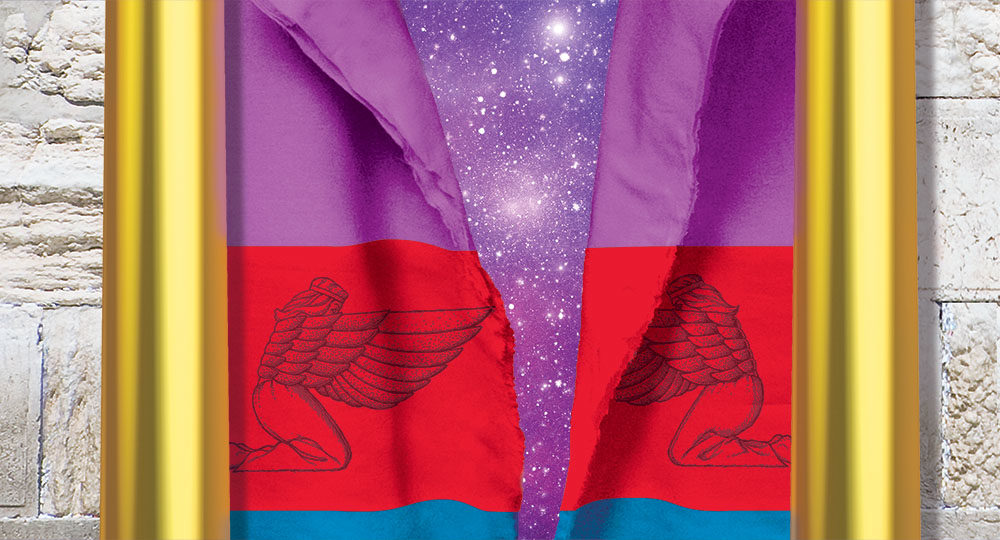
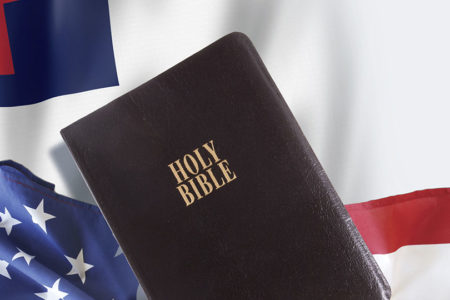
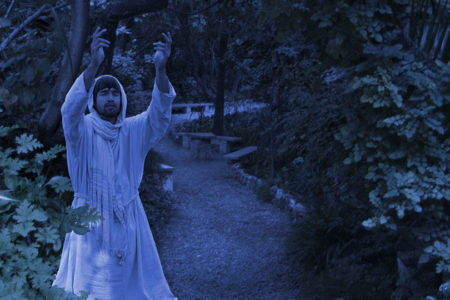
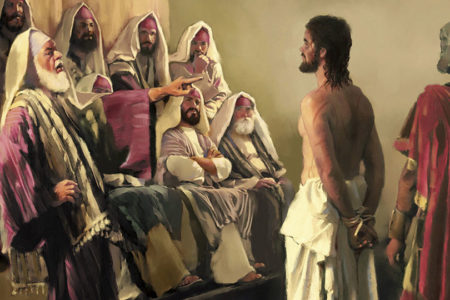
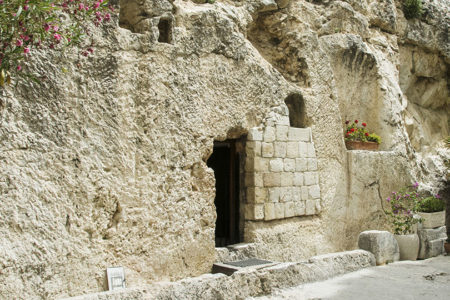
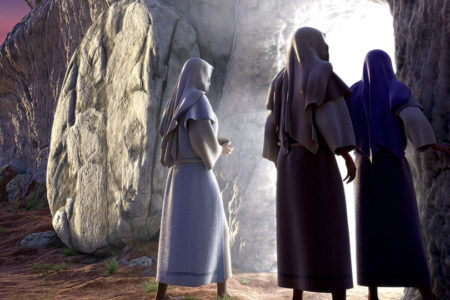


Hi Dr Emmons i m from South Africa .I m the founder of OLD RUGGED CROSS SHELTER MIN.INT.i appreciate this wonderfull Sermon of yours ‘Israel My Glory ‘.I reasontly questioned myself about ‘How did the High Priests of old got behind the veil ,because of its height ;wigth and thickness and in his hands not suppost to put it down the blood and the essence .I should like if Dr can send me books about or sumular teaching I want to used in it my teaching at cell groups.GOD BLESS YOU YOUR FAMILY AND CONGREGATION.
Greatings
Apostle Matroos
(ORCSMI South Africa)